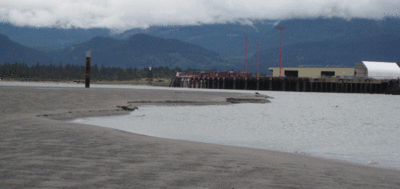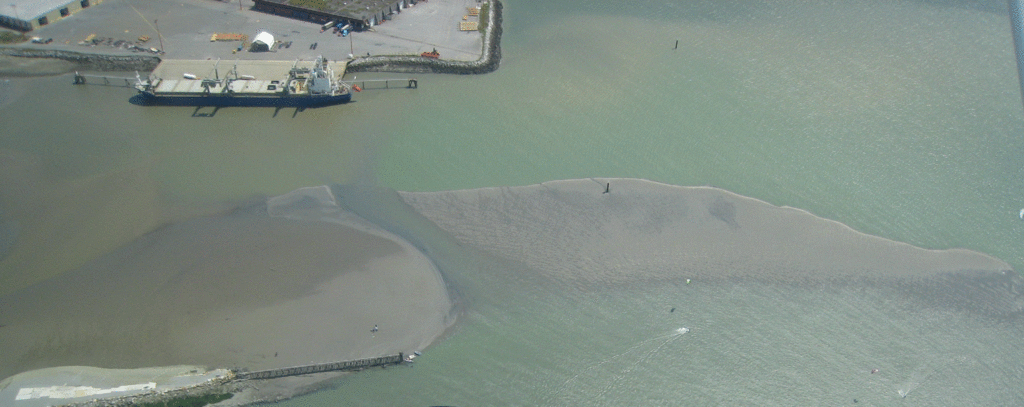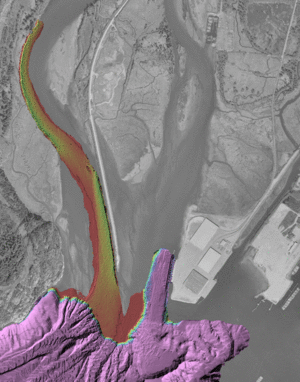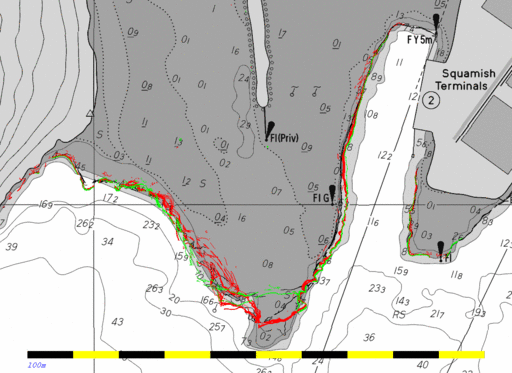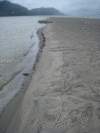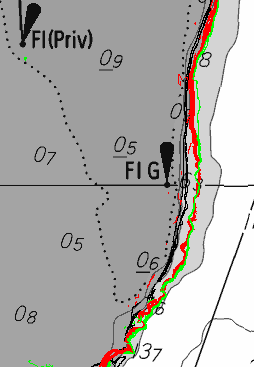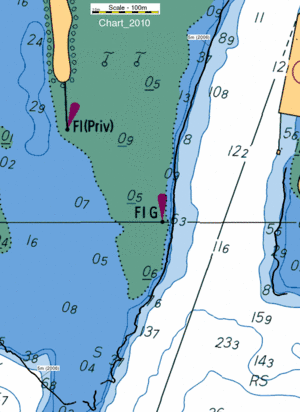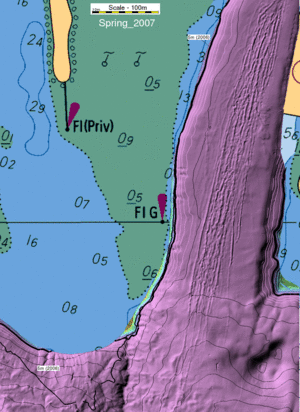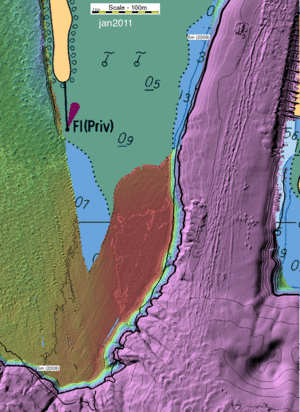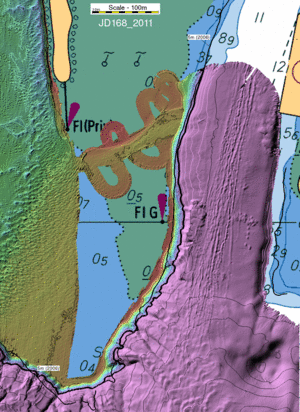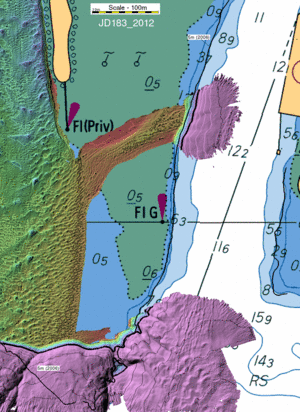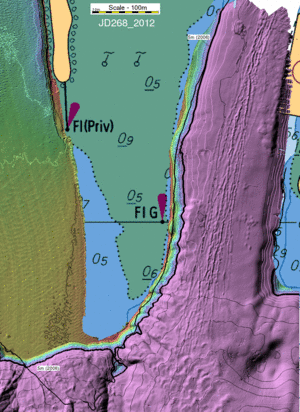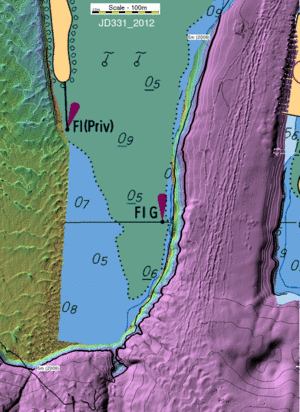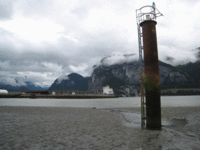
Navigation Beacon on prograding intertidal
shoal
|
If we focus in on the edge of the
intertidal platform on which the navigational
beacon (Fl G) is embedded, we can see that the
contours cluster much closer together indicating a
relatively stable edge over short periods. The
figure to the right however, shows that there is a
gradual progression from year to year.
The black contours indicating 2006/7 match the chart
almost exactly. In contrast the red contours (2011)
show a clear progradation immediately to the east of
the beacon of about 15-20m. And the green contours
(2012) show that this is continuing, especially to
the north where the channel avulsion is most active.
The greatest progradation occurs adjacent to the
navigational beacon. The detailed multibeam images
below show the style of the submerged seabed within
the adjacent dredged berth. |
morphology of the edge
of the intertidal delta lip, looking south
from the beacon
|
